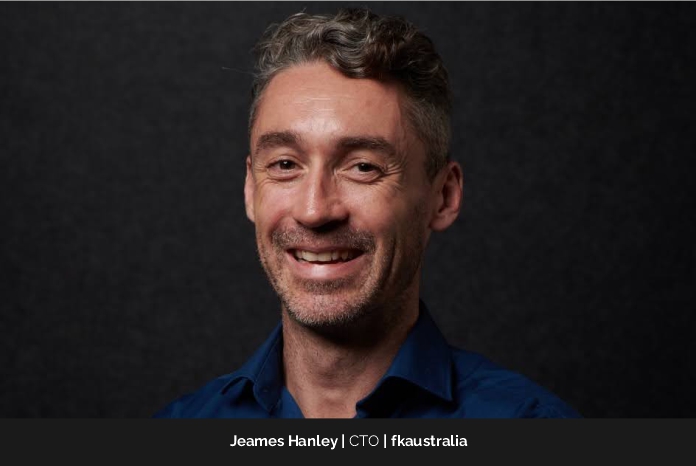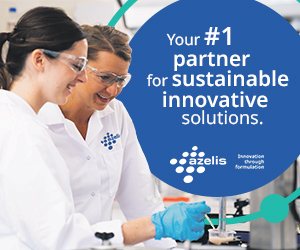Across the world, architecture is emerging from a chrysalis. As an ancient profession, the industry was once one reserved for master craftsmen, the domain of sketches, etchings, and intricate wooden models. Now, craftsmanship is intertwined with technology, where a perpetually growing suite of digital modelling, AI-powered tech, and data driven design is unlocking new possibilities for the future of the built environment.
Leading architectural studio FK is at the nexus of this awakening, harnessing the latest innovations to power their award-winning studios in Sydney, Melbourne, and Brisbane. Leading the charge is Jeames Hanley, newly appointed Chief Technology Officer who joins the practice as one of Australia’s leading names in architectural digital transformation.
With over 15 years of experience in practices and academia across Australia and New Zealand, Jeames has garnered a reputation as an experienced technologist, strategist, and thought leader. He has an exceptional track record of driving digital transformation throughout the built environment to reshape how the industry operates. As an advocate for human-centred technology, Jeames enters FK with revolution on his agenda: a mission to make innovation an inherent part of the studio’s DNA.
Technology Transformation is About People
At a previous company, Jeames led a complete modernisation of a legacy intranet site. A massive, multi-year undertaking, it touched every department and was fraught with complexity and organisational resistance. Jeames considers this one of the most pivotal moments of his career, a learning curve that birthed his philosophy for empathy-driven innovation.
“I learned that technology is only 20% of the battle,” says Jeames. “The other 80% is change management. This experience taught me the absolute necessity of deeply engaging stakeholders from day one, building strong alliances, and investing heavily in communication and training. Success isn’t just about deploying the best tech, but about successfully integrating it into the human ecosystem of the organisation.”
To do this, Jeames takes the time to truly understand the pain points and aspirations of those who will use and be affected by the new systems he champions. From this place of empathy, innovation grows, ensuring solutions are not only technologically advanced but are genuinely useful and -imperatively – are embraced. As a leader, this approach gives way to favouring resilience and iteration over perfection, transforming setbacks into learning opportunities and fostering an environment of fearless experimentation and adaptation.
“I’ve become a change evangelist,” he says. “Mandating change from the corner office never works, so I’ve focused on becoming a passionate advocate for the why behind the transformation. I communicate the vision, the benefits, and paint a clear picture of a more efficient and impactful future.”
Creating Collaborative Successes
Jeames has brought this experience into his new role, and has started his tenure by calibrating his initiatives with the goals of the business. “Every technology initiative starts with a clear understanding of the business problem we’re trying to solve or the business opportunity we’re trying to seize,” reflect Jeames. “We actively participate in strategic planning sessions with business leaders to ensure our tech roadmap directly supports their objectives.”
From here, he’ll take his approach cross-functional, moving beyond the C-suite to engage with business unit leaders, project leaders, and tech leads. This pollination allows change solutions to be co-created and co-owned, allowing for a greater depth of reciprocal understanding, communication, and KPI measurement. Equally importantly, this approach allows “digital champions” to emerge, identifying early adopters across different teams that can provide valuable feedback and act as peer influencers to ease adoption and build grassroots support.
“Technology touches every aspect of an organisation,” he says. “Without deep collaboration, tech solutions risk being misaligned with business needs, poorly adopted, or simply ineffective. You can end up in a silo where your solution only serves one function instead of the whole business.”
For Jeames, success looks like a workforce that is empowered and resilient. He celebrates little wins and telegraphs key milestones to maintain momentum and build an environment of collective strength. where little wins are celebrated and milestones communicated to foster an environment of collective strength. Through active collaboration and a grassroots iterative adoption pathway, consistent, transparent, and empathetic communication can be prioritised to ensure everyone feels supported.
Staying Ahead of the Curve
Fostering an environment of empowerment is especially important in architecture, where the technological landscape is rapidly evolving. Identifying new opportunities and adopting early can give practices a competitive edge in the market, creating a direct correlation between technology and business development. For Jeames, active research and practical assessment sit side by side in this fluid landscape, with dedicated horizon scanning, industry engagement, and internal proof of concept sprints central to his planning. He also prioritises strong strategic technology partnerships, leveraging those relationships for access to new technologies through pilot programs and innovation briefings.
As a voracious learner, Jeames maintains a beginner’s mindset, always seeking new knowledge and challenging assumptions. He actively builds teams that are driven by experimentation, giving them the space, time, and resources to explore new ideas and creating an environment where it’s safe to fail.
Of course, being at the precipice of change can also bring inherent risks, with cybersecurity and digital ethics running as an undercurrent to all new advancements. In all his roles, Jeames has prioritised security and robust governance as a strategic imperative, creating a culture of proactive threat intelligence and sustainable adoption strategies that are crucial in maintaining customer and stakeholder trust. From proactively optimising threat intelligence, to building a sustainable digital ecosystem and advocating for transparency in data usage, Jeames’ CTO scope extends beyond technical oversite and into a more multifaceted leadership position.
“Against a backdrop of ESG, CTOs will be responsible for building and maintaining digital infrastructures that are not only efficient but also sustainable,” he says. “They’ll also be the organisational voice for digital ethics, building technologies that genuinely serve humanity.”
A Culture of Fearless Innovation and Agility
With his journey at FK just beginning, Jeames has grand plans, envisioning a future state where FK is not just recognised for what they build, but how they build it. He wants to create a deep-seated culture where his teams are continuously curious and unafraid to experiment, where innovation isn’t a separate initiative, but at the core of the studio’s ethos, not only driving continuous value but expanding the very core of what architecture can achieve.
He wants to leave behind a modern, secure, and scalable technology that empowers growth and innovation to enable FK to meet future market demands without being hindered by technical debt. He wants to set an example that evolution is constant and intellectual curiosity is imperative, to act as a champion of continuous learning and fearless innovation.
Perhaps most importantly though, Jeames wants his signature “people-first” approach to inspire a new way forward, showing other leaders that compassion and empathy is just as crucial as technical knowledge. He sees a future where a Chief Technology Officer is also a Chief Empathy Officer, able to facilitate an open dialogue around fears and motivations to bring a human element to technological transformations.
It’s this vision that is Jeames’ true superpower and what positions him as a true trailblazer in his field, paving a way forward for architecture that leverages people-first technology to deliver better buildings for us all.





